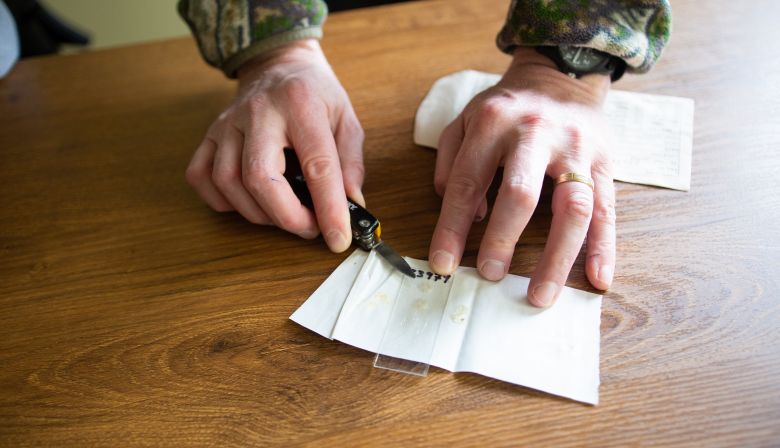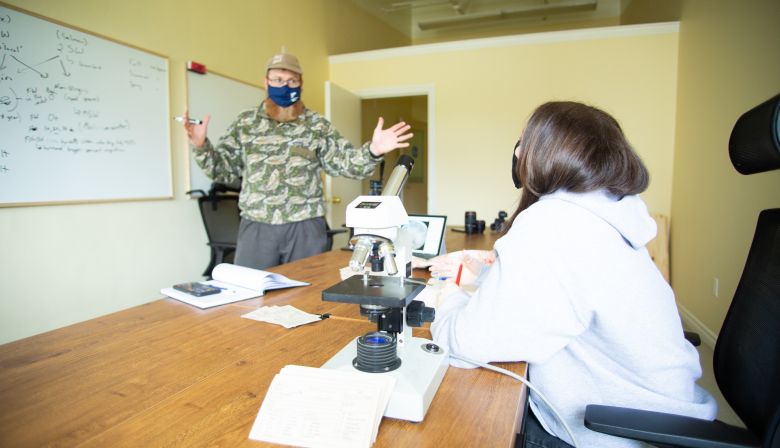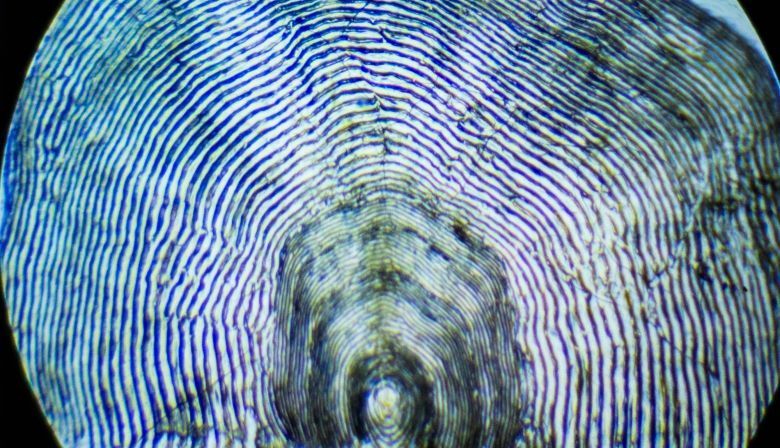
Subscribe & stay up-to-date with ASF


At Coastal Action Foundation’s headquarters in Chester, N.S., high school student Norah Adams peers through the microscope lens to examine an Atlantic salmon scale. Kris Hunter, ASF’s Director of Programs for N.S and P.E.I, looks on.
Two years ago, the Bridgewater N.S. student learned about the negative effects of open net-pen aquaculture on wild Atlantic salmon. Now in the tenth grade, the burgeoning salmon advocate is hard at work developing a tool to differentiate wild salmon from aquaculture escapees quickly and easily.
Adams explains the inspiration for her project: “In 2019 I first worked on a science fair project that dealt with the environmental impacts of aquaculture. This led me to have a greater interest in fish, fish populations and (more specifically) salmon populations in Nova Scotia, and what I could do to help them.”

She wanted to develop a project that wasn’t only interesting, but useful. That’s where ASF’s Kris Hunter came in. Adams says, “Together we were able to focus the goals of this project while also incorporating the needs our province has today. The lack of traceability [of aquaculture escapees] seemed like an issue that deserved our attention.”
The current method to determine a salmon’s origins is genetic testing, which is costly and time-consuming. But a fish’s scales tell the story of its growth patterns—its life history. And aquaculture fish have very different lives than wild Atlantic salmon. “Aquaculture and wild salmon have much different ways they live their lives, which appear as different growth patterns on their scales,” says Adams.

In fact, using scales to tell wild from aquaculture fish isn’t a new idea. Jonathan Carr, ASF Vice-President Research and Environment, is an expert on the decades-old subject and has given many presentations to various stakeholders over the years. What’s missing, he says, is a mechanism that can be used easily in the field. Carr says that a ‘rapid-identification’ tool, likely involving the use of a pocket microscope, could help researchers or volunteers identify aquaculture escapees streamside.
Hunter agrees that this type of tool could make a real difference. “Currently there is no way of monitoring escaped aquaculture fish to see where they go and how they impact wild Atlantic salmon. We’re hoping we can come up with a tool that could be used to get an idea on whether a fish was wild or from an open net pen. By incorporating this tool into community-based and other monitoring programs, we’ll be able to see where escapees are likely having an impact. We can then make informed decisions to protect our native wild fish.”

Adams is excited about helping protect wild Atlantic salmon, and thankful for her mentor’s direction. “Kris has played a crucial role in this project,” she says. “He has helped me focus on a project that would be not only relevant and applicable, but also has the potential to make real change.”
Looking ahead, Adams says more salmon research could very well be in her future: “I would definitely want to expand my research and explore other ways of applying this method.” With a keen researcher like Adams leading the next generation of Atlantic salmon conservationists, the future of the species is definitely in good hands.
To learn more about Adams’ research project, check out her website at https://www.scotiasalmonid.com